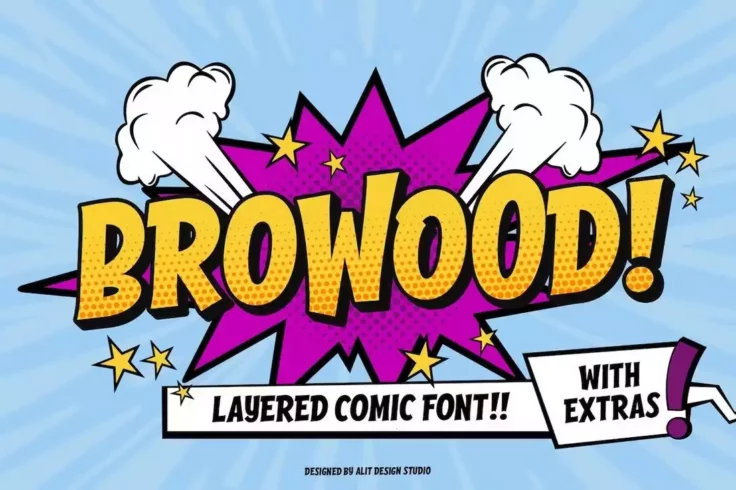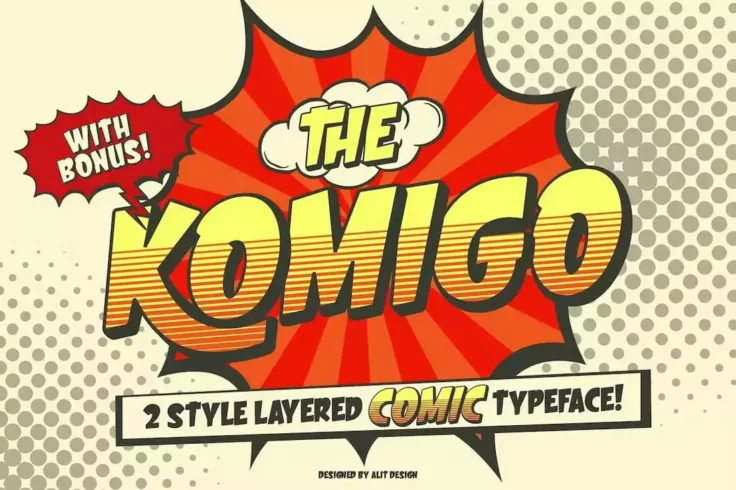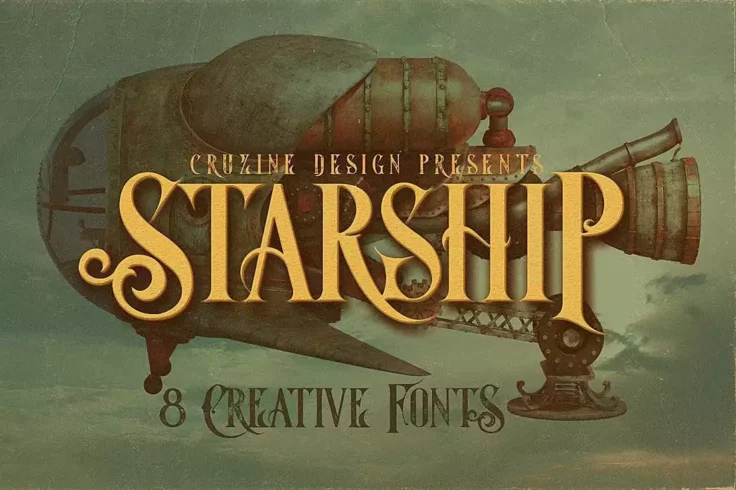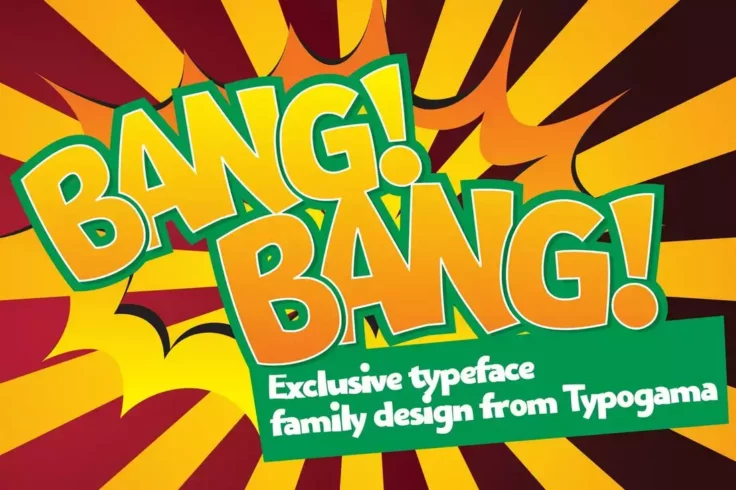20+ Best Comic Fonts
Unleash your inner superhero with our comic fonts. Perfect for comic books, superhero-themed designs, or any project that needs a dash of action and adventure. These fonts capture the energy and excitement of classic comic style.

Browood Layered Comic Book Font
Browood is a modern comic book font with a classic design. It features a layered design with lots of bonus glyphs and comic characters. The font is av...

Best Friends Creative Comic Font
This is the perfect font you can use with various comics to design both titles and splash panels. The font not only comes with a creative hand-made de...

Komigo Creative Comic Font
Komigo is another creative comic font that blends vintage and retro design elements to create a unique look. You can use it to craft attractive headli...

Starship Creative Font Family
Starship is a family of fonts that comes with 8 different typefaces featuring various designs. The font also features a creative style inspired by ste...

Bangbang Splash Comic Font
Another great comic font you can use to design attractive splash panels and pages. The font comes in multiple weights and with multilingual support as...

Chopic Vintage Comic Font
Chopic is a vintage comic font that will remind you of the typography of comic books from the 70s and the 80s. It’s the perfect font for designi...
FAQs About Comic Fonts
What are comic fonts?
Comic fonts are fonts that originated from comic books and graphic novels. These fonts are usually fun, quirky, and playful in nature. They are highly expressive and often use bold and thick strokes to emulate the style of lettering used in traditional comic books.
The popularity of these fonts extends beyond comics and has been used in different kinds of media, including video games, animations, and advertising materials, among others. Comic fonts have become a favorite for creating a playful and informal tone in a text.
When should I use comic fonts?
Comic fonts are perfect for when a sense of humor, fun, or whimsy is needed in your design. They work perfectly for children's books, game apps, party invitations, or anything that shouldn't be too serious or formal. Comic fonts have the ability to make a text come alive with personality and flavor.
Paying attention to when to use comic fonts is crucial because they can be easily overused and make your design look amateurish if used incorrectly. It's always best to understand the nature of your content and your audience before deciding to apply a comic font.
Why is Comic Sans widely criticized?
Comic Sans, one of the most well-known comic-style fonts, is often criticized for its overuse and misuse. Although it was originally designed to replicate comic book lettering and be used in an informal context, it has often been used inappropriately in serious or formal scenarios, which may have contributed to its negative reputation.
Due to this, Comic Sans has often been seen as unprofessional, undermining the credibility of the content it's used with. Despite the criticism, however, Comic Sans remains popular for its deviation from traditional typefaces and its playful style.
What are some examples of popular comic fonts?
While Comic Sans may be the most widely known, there are many other comic fonts that offer a variety of styles and personality. Some of these include Badaboom, Komika Axis, Zud Juice, Anime Ace, Back Issues, and Blambot Classic. These fonts all bear the distinctive, playful characteristics of comic fonts but each bring a unique flavor.
These fonts are often used in comics, graphic novels, and animations. However, they can also be used in designing logos, branding, advertising, and any medium where a fun and informal tone is desired.
What makes a good comic font?
A good comic font is clear and legible, even though it tends to be more stylized than other fonts. It should also be visually appealing and be able to express emotion effectively. A good comic font should compliment the overall theme, and not distract from the artwork or the story being told. It should allow for a smooth reading experience.
Furthermore, a good comic font should also be flexible and scalable. This means it should still be readable, clear, and maintain its appearance even when used at different sizes. In addition to this, a good comic font should offer a complete set of characters—uppercase, lowercase, numbers, and punctuation marks at least—to ensure it can handle a variety of text.